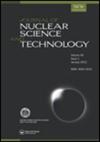四维朗格万模型与Hauser-Feshbach理论的结合来描述裂变碎片的统计衰变
IF 1.7
4区 工程技术
Q2 NUCLEAR SCIENCE & TECHNOLOGY
引用次数: 0
摘要
我们开发了一种新的理论方法,通过将四维Langevin动力学模型计算的质量和总动能(TKE)分布与Hauser-Feshbach统计衰变模型联系起来,获得独立的裂变生成量和瞬发中子观测值。在Langevin计算中,分别获得了标准I和II模式对应的质量分布,并叠加再现了238,240,242Pu自发裂变和239Pu热中子诱导裂变的裂变碎片产率。这是通过在双中心壳模型形状参数化中对这两种模式使用不同的颈参数来实现的,并得到了重叠比作为裂变核(N−Z)/ a的函数的系统分布。利用核反应代码TALYS对239Pu(n,f)在入射能量从热到5MeV范围内的反应进行了Hauser-Feshbach计算,并将计算得到的瞬发裂变观测值与实验和评估数据进行了比较。虽然对最重要的核素需要进一步改进,但事实证明,目前的方法有能力为难以测量的核素准备与裂变有关的核数据。本文章由计算机程序翻译,如有差异,请以英文原文为准。
Connection of four-dimensional Langevin model and Hauser-Feshbach theory to describe statistical decay of fission fragments
We have developed a novel theoretical method to obtain independent fission product yields and prompt neutron observables by connecting mass and total kinetic energy (TKE) distributions calculated by a four-dimensional Langevin dynamical model to a Hauser-Feshbach statistical decay model. In the Langevin calculations, mass distributions corresponding to the standard I and II modes were obtained separately and superposed to reproduce the fission fragment yield of spontaneous fission of 238,240,242Pu and thermal neutron-induced fission of 239Pu. This was achieved by using different neck parameters for these two modes in the two-center shell model shape parametrization, and a systematics of the superposing ratio was obtained as a function of (N−Z)/A of the fissioning nuclei. The Hauser-Feshbach calculations were performed using a nuclear reaction code TALYS for 239Pu(n,f) reaction in the incident energy range from thermal up to 5MeV, and the calculated prompt fission observables were compared with experimental and evaluated data. Although further improvements are needed for the most important nuclides, it turned out that the present methodology has the capability to prepare fission-related nuclear data for nuclides for which measurements are difficult.
求助全文
通过发布文献求助,成功后即可免费获取论文全文。
去求助
来源期刊

Journal of Nuclear Science and Technology
工程技术-核科学技术
CiteScore
2.40
自引率
16.70%
发文量
116
审稿时长
2.3 months
期刊介绍:
The Journal of Nuclear Science and Technology (JNST) publishes internationally peer-reviewed papers that contribute to the exchange of research, ideas and developments in the field of nuclear science and technology, to contribute peaceful and sustainable development of the World.
JNST ’s broad scope covers a wide range of topics within its subject category, including but are not limited to:
General Issues related to Nuclear Power Utilization: Philosophy and Ethics, Justice and Policy, International Relation, Economical and Sociological Aspects, Environmental Aspects, Education, Documentation and Database, Nuclear Non-Proliferation, Safeguard
Radiation, Accelerator and Beam Technologies: Nuclear Physics, Nuclear Reaction for Engineering, Nuclear Data Measurement and Evaluation, Integral Verification/Validation and Benchmark on Nuclear Data, Radiation Behaviors and Shielding, Radiation Physics, Radiation Detection and Measurement, Accelerator and Beam Technology, Synchrotron Radiation, Medical Reactor and Accelerator, Neutron Source, Neutron Technology
Nuclear Reactor Physics: Reactor Physics Experiments, Reactor Neutronics Design and Evaluation, Reactor Analysis, Neutron Transport Calculation, Reactor Dynamics Experiment, Nuclear Criticality Safety, Fuel Burnup and Nuclear Transmutation,
Reactor Instrumentation and Control, Human-Machine System: Reactor Instrumentation and Control System, Human Factor, Control Room and Operator Interface Design, Remote Control, Robotics, Image Processing
Thermal Hydraulics: Thermal Hydraulic Experiment and Analysis, Thermal Hydraulic Design, Thermal Hydraulics of Single/Two/Multi Phase Flow, Interactive Phenomena with Fluid, Measurement Technology...etc.
 求助内容:
求助内容: 应助结果提醒方式:
应助结果提醒方式:


